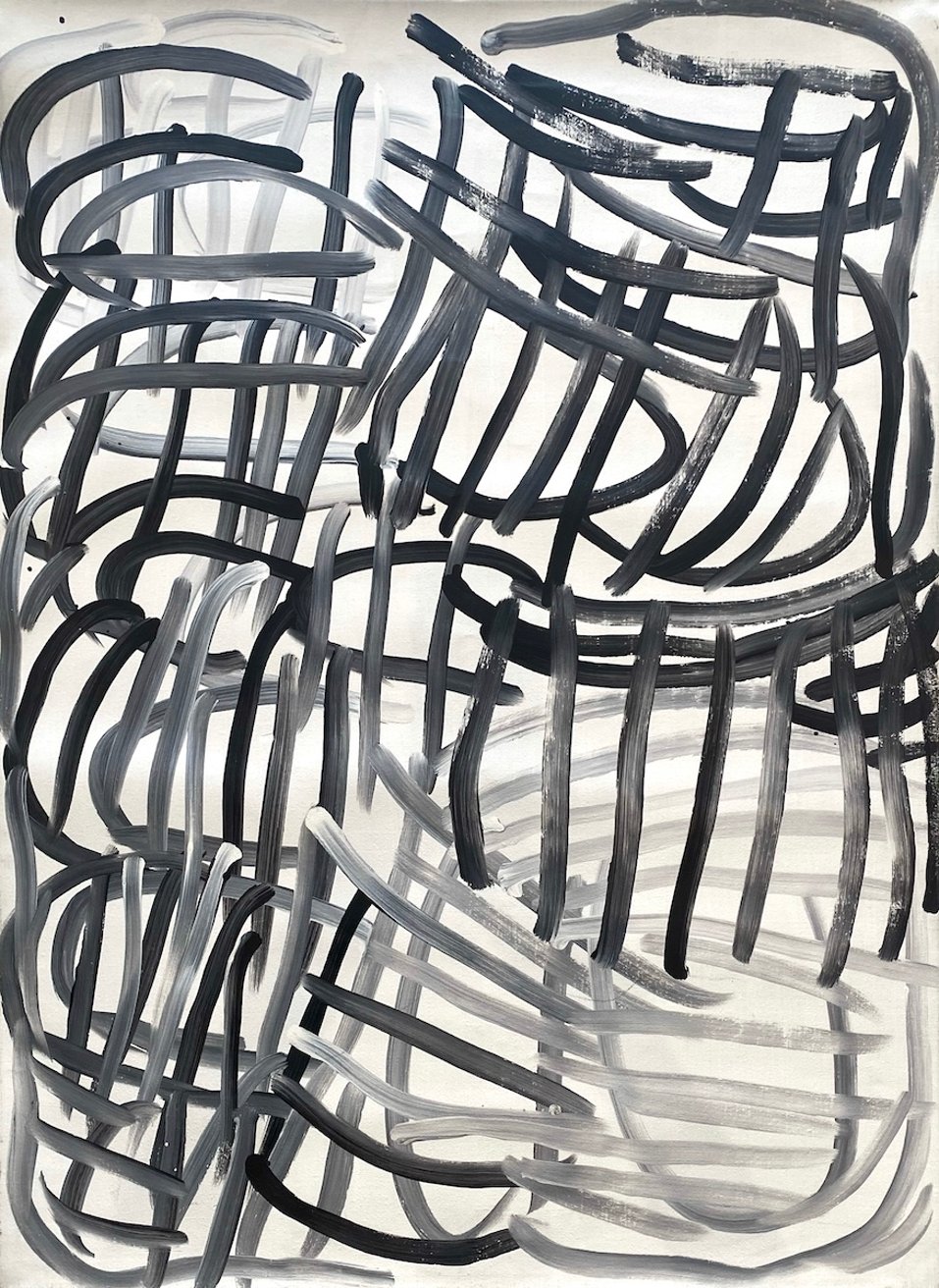Minnie Pwerle (c1920's-2006)
Minnie was born in the early 20th century near Utopia, 300 km north-east of Alice Springs, in the Northern Territory. Pwerle (in the Anmatyerre language) or Apwerle (in Alyawarr) is a skin name, one of 16 used to denote the subsections or subgroups in the kinship system of central Australian Indigenous people. These names define kinship relationships that influence preferred marriage partners, and may be associated with particular totems. Although they may be used as terms of address, they are not surnames in the sense used by Europeans. Thus "Minnie" is the element of the artist's name that is specifically hers. She was one of six children, and had three sisters: Molly, born around 1920, Emily, born around 1922, and Galya, born in the 1930s. She was of the Anmatyerre and Alyawarre Aboriginal language groups.She had seven children, some of whom went on to forge an artistic career also. Minnie began painting in late 1999 or 2000, when she was almost 80. When asked why she had not begun earlier (painting and batik works had been created at Utopia for over 20 years), her daughter Barbara Weir reported Minnie's answer as being that "no-one had asked her". By the 2000s, she was reported as living at Alparra, the largest of Utopia's communities, or at Urultja (also Irrultja, again in the Sandover region). Sprightly and outgoing, even in her eighties she could outrun younger women chasing goannas for bushfood, and she continued to create art works until two days before her death in 2006. She was outlived by all her sisters except Maggie Pwerle, mother of artists Gloria and Kathleen Petyarre (or Pitjara).
Minnie's style was spontaneous, and typified by "bold" and "vibrant" colour executed with great freedom. Her works, such as Anunapa, Akali held by the National Gallery of Victoria, were executed in acrylic paint on canvas. As with other contemporary artists of the central and western deserts, her paintings included depictions of stories or features for which she had responsibility within her family or clan, such as the Awelye Atnwengerrp dreaming (or Women's Dreaming). Her paintings include two main design themes. The first is free-flowing and parallel lines in a pendulous outline, depicting the body painting designs used in women's ceremonies, or awelye. The second theme involves circular shapes, used to symbolise bush tomato (Solanum chippendalei), bush melon, and northern wild orange (Capparis umbonata), among a number of forms of bushfood represented in her works. Together, the designs were characterised by one reviewer as "broad, luminescent flowing lines and circles".
Minnie's art was quickly added to major public collections such as the Art Gallery of NSW, Art Gallery of South Australia, National Gallery of Victoria and Queensland Art Gallery. It was also included in a 2009 exhibition of Indigenous Australian painting at the New York Metropolitan Museum of Art.
Regarded as one of Australia's leading contemporary women artists, Minnie ranks alongside other notable Indigenous female painters Dorothy Napangardi, Gloria Petyarre and Kathleen Petyarre. One of a number of women such as Emily Kngwarreye who dominated central and western desert painting in the first decade of the 21st century, Minnie is considered to be one of Australia's best-known Indigenous artists, whose work "the market couldn't get enough [of]".
Minnie's style was spontaneous, and typified by "bold" and "vibrant" colour executed with great freedom. Her works, such as Anunapa, Akali held by the National Gallery of Victoria, were executed in acrylic paint on canvas. As with other contemporary artists of the central and western deserts, her paintings included depictions of stories or features for which she had responsibility within her family or clan, such as the Awelye Atnwengerrp dreaming (or Women's Dreaming). Her paintings include two main design themes. The first is free-flowing and parallel lines in a pendulous outline, depicting the body painting designs used in women's ceremonies, or awelye. The second theme involves circular shapes, used to symbolise bush tomato (Solanum chippendalei), bush melon, and northern wild orange (Capparis umbonata), among a number of forms of bushfood represented in her works. Together, the designs were characterised by one reviewer as "broad, luminescent flowing lines and circles".
Minnie's art was quickly added to major public collections such as the Art Gallery of NSW, Art Gallery of South Australia, National Gallery of Victoria and Queensland Art Gallery. It was also included in a 2009 exhibition of Indigenous Australian painting at the New York Metropolitan Museum of Art.
Regarded as one of Australia's leading contemporary women artists, Minnie ranks alongside other notable Indigenous female painters Dorothy Napangardi, Gloria Petyarre and Kathleen Petyarre. One of a number of women such as Emily Kngwarreye who dominated central and western desert painting in the first decade of the 21st century, Minnie is considered to be one of Australia's best-known Indigenous artists, whose work "the market couldn't get enough [of]".
